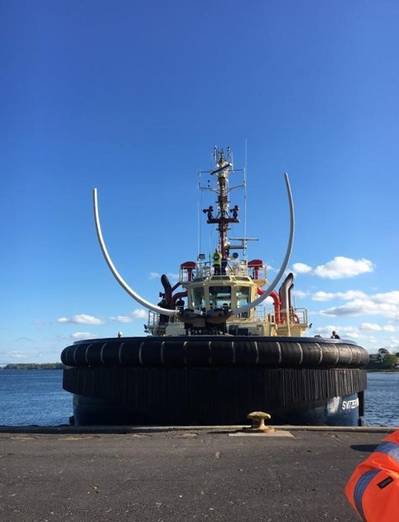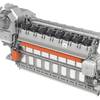Svitzer Trials New Line Handling Tech
Svitzer has begun sea trials of a new ‘industry-first’ remotely operated line catching technology prototype.
The new mechanism is being trialed on the vessel Svitzer Trym, in the company’s Scandinavian fleet, and could significantly improve safety standards and reduce risks for crews during the process of connecting with other vessels, one of the most critical elements of towage operations.
Connecting heaving lines at sea is one of the most critical parts of day-to-day towage operations, and one which presents significant risk to crews, particularly from a center lead forward position where we must operate very close to the connecting vessel. This is further influenced by other factors including wind, sea state, and the increasing size of vessels where the distance from the tug is significantly greater and requires more accurate throwing.
Svitzer’s new prototype line catcher is remotely operated from the wheelhouse and catches and secures the connecting vessel’s heaving line. With a wingspan of between 6 and 7 meters when activated, the crew on the connecting vessel has a larger target area to hit with the heaving line weight, and no member of the tug’s crew is exposed during the process. As well as enhancing safety standards, the automated catching arm prototype is also designed to increase the success rate of connecting the vessel to the tug, leading to safer and more efficient operations.
Svitzer’s team in Copenhagen has been developing the remote line handling technology for the past year, and it will now be installed and tested over the coming months on Svitzer Trym to prove the concept.
The installation is being conducted in consultation and with final approval from Lloyd’s Register.











